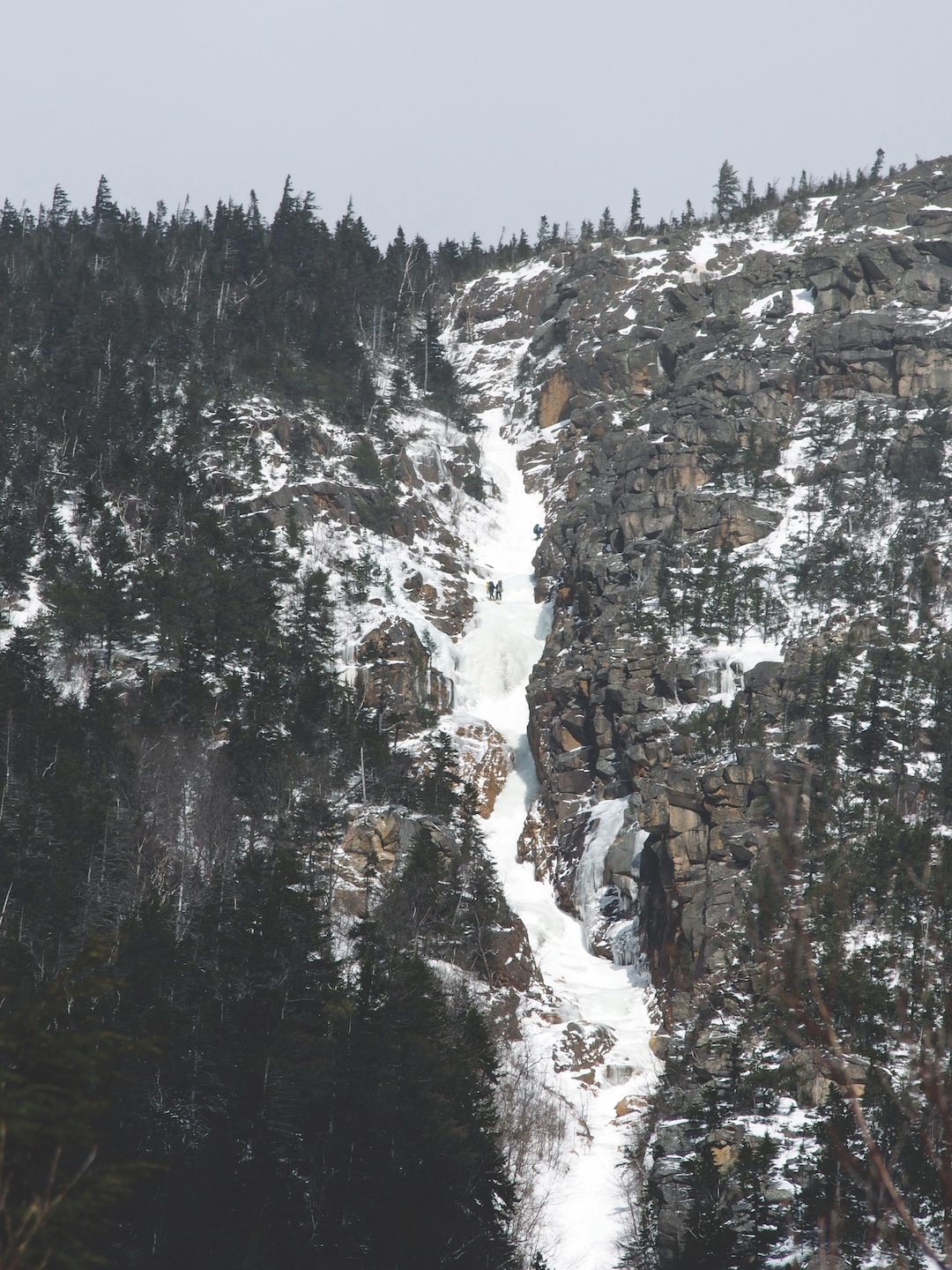Long Leader Fall on Ice
New Hampshire, Crawford Notch State Park, Mt. Webster

On December 14, Slavek Zaglewski (55) was climbing Shoestring Gully (WI2 M2) with his friend Mariusz Markewicz. This long, moderate climb starts as a snow gully and steepens through several ice steps before finishing via a classic mixed exit.
In the late afternoon, Zaglewski fell 60 feet while leading a chimney near the top. Despite wearing a helmet, he suffered severe head injuries and was unconscious and unable to move. Markewicz anchored Zaglewski in a secure position.
Having no cell service, Markewicz soloed the final section in darkness to reach the rim on Mt. Webster. Around 7 p.m., he was able to call 911. With temperatures falling into the teens, a New Hampshire Fish and Game SAR team responded along with two dozen volunteers from the Mountain Rescue Service (MRS) and Androscoggin Valley SAR (AVSAR).
MRS team members climbed the gully to reach Zaglewski at 11:19 p.m. They began treatment for hypothermia. On December 15 at 12:46 a.m., AVSAR descended with a litter and raised him 400 feet to the rim. Zaglewski was carried two miles down the steep trail, arriving at a waiting ambulance at 5 a.m.
The following day he was transferred from a North Conway hospital to an ICU in Portland, Maine. His injuries included fractured neck vertebrae, rib and nose fractures, a severe concussion, lacerations, and cold-weather injuries. He remembered nothing of his accident until three weeks later. Six months later, he was still dealing with frostbitten fingers that would require partial amputation.
ANALYSIS
Zaglewski had climbed Shoestring Gully twice before, and it was well within his ability. At the time of the accident, there was less ice than usual due to a warm autumn. The difficult conditions contributed to his fall.
Falls on alpine terrain are always serious. Place protection where you can. Early-season ice and mixed climbs often require rock protection, ice hooks, and possibly pitons for iced-in cracks.
Hypothermia is a secondary risk in winter climbing, and this hazard increases when one is rendered inactive due to trauma. A climber’s relative physical fitness has little influence on the onset speed of hypothermia. Despite the fast response and sizable rescue resources, Zaglewski was immobile for six hours. He also believes he may have removed his gloves due to the paradoxic hot sensation sometimes felt by victims of extreme hypothermia.
This remarkable overnight rescue prevented a worse outcome. Zaglewski said in a newspaper article, “My rescuers are amazing. I owe my life to them.” (Sources: Slavek Zaglewski, Sgt. Alex Lopashanski, New Hampshire Fish and Game, and Clara Cousins.)

